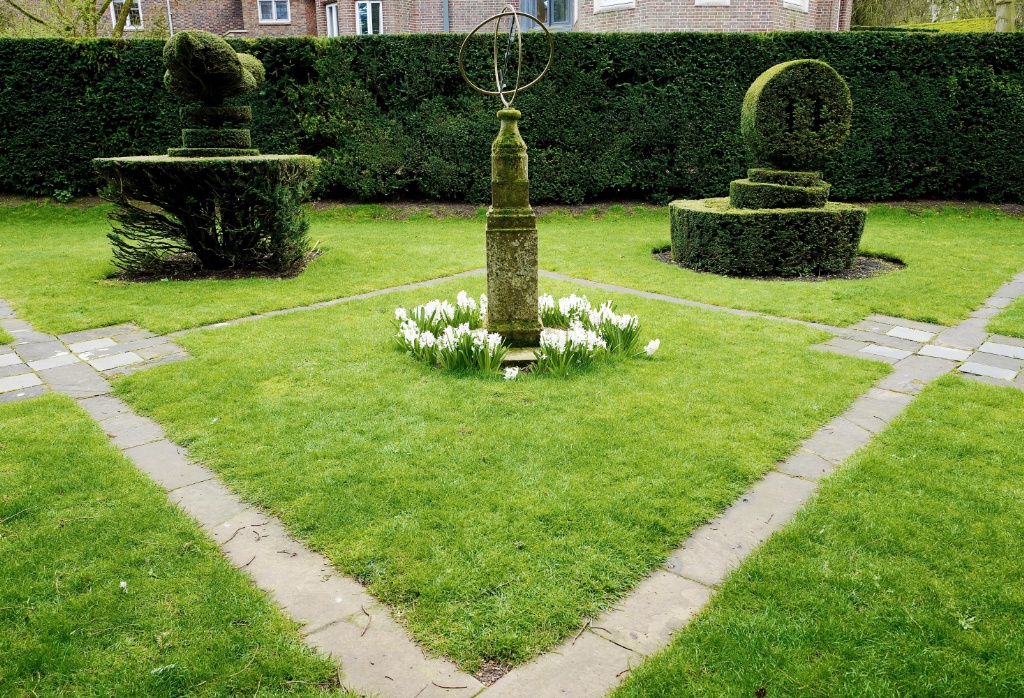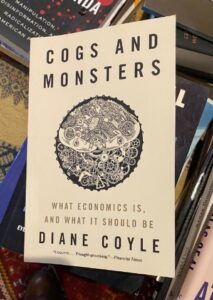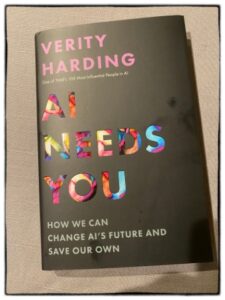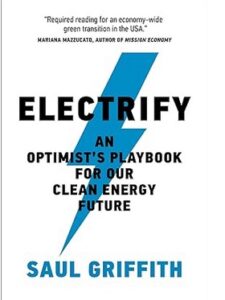Figures in a cloister

Quote of the Day
“I’ve been accused of vulgarity. I say that’s bullshit.”
Musical alternative to the morning’s radio news
Liam O’Flynn | The Rocks Of Bawn
Link
Long Read of the Day
A World Nobody Wants
If you approach the beautiful, historic city of Cambridge from the south, travelling on the M11, what is the first thing you see? Why, a vast wall of hideous Stalinist apartment blocks of the kind that Erich Honecker might have admired, if only the GDR had been able to muster the materials to build them.
This depressing vista is what came to mind when I started on David Schaengold’s bracing essay in Compact Magazine.
Some may continue to tell themselves we live in a time of great innovation, but at least in the world of architecture, engineering, and construction, the sense of stagnation is undeniable. In 13th-century France, entire new technologies of church construction were invented, boomed, and turned into clichés in the course of 50 years. What was built during those rushes of collective mania includes some of the most beautiful and magnificent objects human hands have ever touched. America has used the same amount of time to ensure that every construction worker always wears a hard hat and a shiny vest. The only big change since 1974 is that back then, some people still believed the future might be better.
Why have we built an entire world that nobody loves? Why are the riches of the wealthiest civilization in history spent on hideous highway viaducts that crumble as soon as they are built, instead of temples, monuments, towers, boulevards, and gardens?
The world of buildings, streets, cities, and rooms is a world made by human hands. The developer thought brick veneer would sell better than something else; the architect chose a brick pattern; the bricklayer laid down the mortar and set the brick in its proper place. Someone selected the particular sink in your bathroom. Someone wrote the words of the fire code that regulates the construction of the new apartment building around the corner. And yet no one chose the whole thing, and no one likes the whole thing…
You get the idea. Do read on. I hope you enjoy it as much as I did.
Books, etc.

After watching Timothy Garton Ash’s recent talk on “Europe at War and How the World Responds to It”, I went back to his absorbing and compulsively readable personal history of Europe. I had read it shortly after it came out and loved its combination of sharp political reporting, historical analysis and personal reflections on the continent he loves and understands.
Interestingly, it seems even better second time around. He’s such a sharp observer of recent history, and is particularly good at putting events in perspective. He views post-war history as having three phases: post-war (1945-1988); post-Wall (1989-2008); and Post-Western-World (the phase we’re now in). In that context the findings of some of his recent global polling research are sobering, especially in how they reveal the sharp divide between how Europeans view the war in Ukraine and how the rest of the world (especially the post-colonial global South) sees it.
Listening to Tiim, one begins to rethink assumptions hitherto regarded as foundational — like the notion of a bipolar world dominated by two hegemonic powers — US/‘West’ and China. He thinks we’ve moved into what he calls an “a la carte world” in which states feel free to pick and choose between the potential alliances on offer, depending on where their national interests lie. So while they may disapprove of (for example) the way China treats the Uyghurs, that doesn’t stop them buying Chinese EVs.
Re-reading this marvellous book in the light of how his thinking has evolved since its publication is a real treat.
My commonplace booklet
Carlota Perez’s ‘five surges’ model of technology evolution
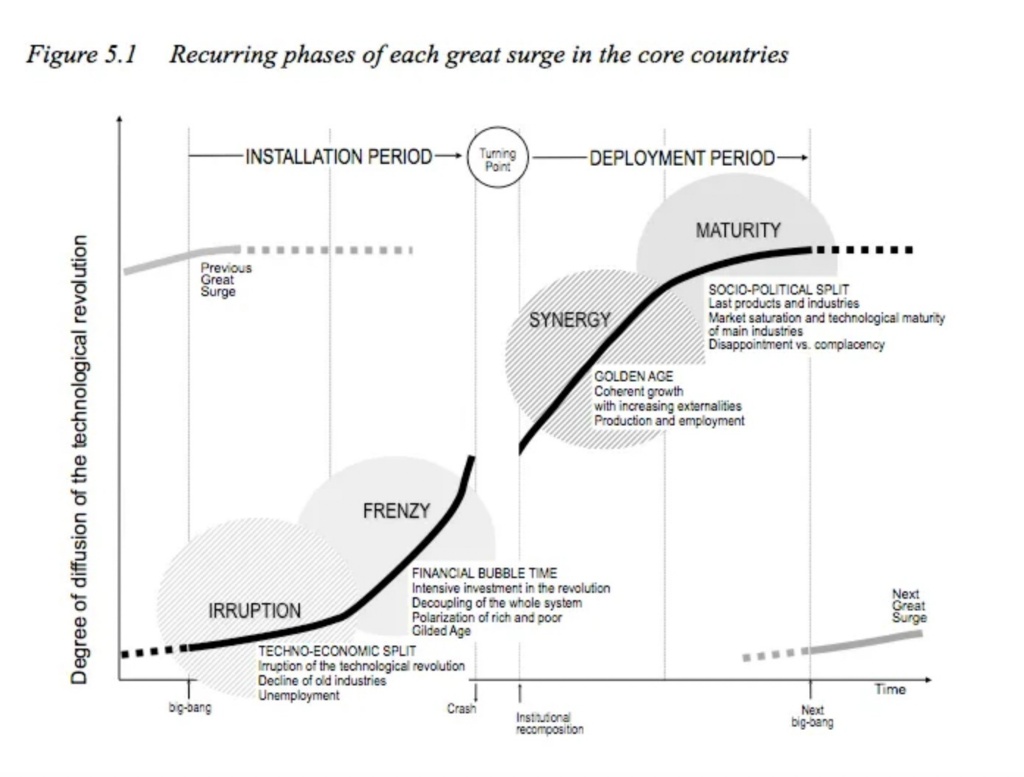
Perez is one of the most profound thinkers about technology-driven cycles. We all know about the Gartner Hype Cycle, and the fact that new technology usually follows a sigmoid curve — an elongated S-shape which asymptotically flattens out at the end.
But for a while Perez has been struck by the fact that our current sigmoid seems to have broken in the middle. “With the current ICT revolution”, she muses,
we seem to be stuck in the installation period or in what I call the ‘turning point’, which is the mid-way time of recessions and uncertainty, revolts and populism that reveals the pain inflicted on society by the initial ‘creative destruction’ process. It is precisely when the system is in danger and is being questioned and attacked that politicians finally understand they must set up a win-win game between business and society. And it is the time when much of business understands it must be done.
Of course, each revolution is unique, and the pattern is not mechanical. It depends on the context and on the particularities of each set of new technologies. And yet this time, although installation has been more intense than ever, both in jobs and regional destruction and in lifting new areas and whole countries to development, post bubble crashes have not led to an institutional rethinking to unleash the better and fairer times of the Information revolution. Expectations for a golden age after the NASDAQ collapse, and again after the 2008 financial crash, have been disappointed…
She goes on to try to figure out why this time may be different.
One reason might be that
“after four revolutions replacing manual labour, the new technologies have found an enormous new territory to mechanise: mental labour!”
(Cue ‘AI’?)
Another could be that the globalisation that accompanied the digital revolution
“implies a more complex process of propagation of production and demand across many countries. The ease of internet penetration to the most hidden corners of the world, and the access to information about conditions anywhere, have made it easy to reach many more parts of the globe and much more deeply than the first globalisation from the 1870s, which was based on telegraph, railways and steamships.
It’s refreshing to encounter a thinker who manages to rise above contemporary discourse about technology, which mainly involves thinkers with short attention-spans thrashing about in the reeds.
(h/t to the incomparable Andrew Curry for reminding me about Perez. And to Bill Janeway, who first alerted me to her work.)
Linkblog
Something I noticed, while drinking from the Internet firehose.
I like wearing boots, both for everyday use as well as long walks, but find that lacing them up can be a pain. Yesterday, my friend Quentin (Whom God Preserve) pointed me to Ian’s Shoelace Site, which in turn pointed me to this video and made my day! And maybe yours too. Sometimes, the Internet is wonderful.
This Blog is also available as an email three days a week. If you think that might suit you better, why not subscribe? One email on Mondays, Wednesdays and Fridays delivered to your inbox at 6am UK time. It’s free, and you can always unsubscribe if you conclude your inbox is full enough already!










